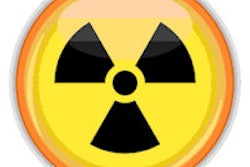Dear AuntMinnie Member,
U.K. voters shocked the world last week when a majority chose to exit the European Union (EU), setting in motion a process known colloquially as "Brexit." Since then, pundits and prognosticators have been dissecting the ramifications of the move for the global economy. But what does it mean for medical imaging?
Fortunately, we offer analysis of Brexit on our AuntMinnieEurope sister site. You'll find this article on a June 27 statement by the U.K. Royal College of Radiologists that seeks to assuage concerns of radiology personnel from EU nations who might be working in the U.K., as well as this column by contributing editor Stephen Holloway on the uncertainty that will result from the move.
Be sure to check back at AuntMinnieEurope.com for more coverage of this developing story.
Joint Commission and CT
Imaging facilities have been scrambling to comply with new CT accreditation requirements from the Joint Commission, but things may not be as complicated as they look, according to a presentation from the just-concluded annual meeting of the International Society for Computed Tomography (ISCT).
Dr. Myron Pozniak of the University of Wisconsin-Madison told ISCT 2016 attendees that many of the Joint Commission's requirements are based on things that CT sites are already doing. But it's important to document everything, he advised. Learn about the four main areas of practice that the standards address by clicking here.
In other news from ISCT 2016, a panel weighed the best approaches for stroke imaging by identifying specific features that can help select patients for reperfusion therapy. Find out how it works by clicking here, or visit our CT Community for this story and more coverage of ISCT 2016.
Impact of breast density laws
A wave of laws mandating breast density notification has been sweeping state legislatures (New York became the latest to pass a law this week). But how are the laws affecting radiology practice? Click here to find out for an article in our Women's Imaging Community.




















